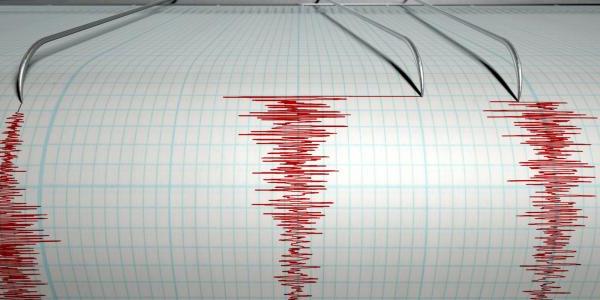With National Science Foundation support, 科罗拉多大学博尔德领导的计划旨在吸引代表性不足的人参与地球科学,并在“包容和合作科学”的前沿培养基层思想
由博彩平台推荐的一位地球科学家领导的一个研究小组赢得了一项2美元的奖金.5 million grant from the National Science Foundation (NSF) to advance geochronology, 对地球物质年龄的研究——这是了解地球过程和历史的关键领域.
NSF’s support will establish an initiative called Advancing Geochronology Science, Spaces, and Systems (AGeS-cubed or AGeS3). 这项工作旨在促进对地质年代学数据和专业知识的获取,以促进科学家对地球系统的理解, launch a platform to attract under-represented minorities to the geosciences, and test grassroots ideas at the “frontier of inclusive and collaborative science.”

Rebecca Flowers
Rebecca Flowers博彩平台推荐地质科学教授,是这项为期五年的研究的首席研究员. Her collaborators are CU Boulder Associate Professor Leilani Arthurs, Professor Ramon Arrowsmith of Arizona State University and Vicki S. McConnell, executive director of the Geological Society of America.
地质年代学数据对于解决与气候变化有关的地球系统科学中的一级问题至关重要, biologic and landscape change, earthquake cyclicity and hazards and solid Earth evolution. But the National Academies have noted barriers persist to geochronology data access, technical innovation and training. 弗劳尔斯和她的同事打算通过三个小额赠款项目来解决这些需求.
Flowers recently answered five questions from this publication about the project, which was funded through the NSF’s Frontier Research in Earth Sciences Program. The questions and answers appear below:
问:您和您的同事注意到,美国国家科学院一再强调地质年代学数据获取的挑战, technical innovation and training; can you summarize the nature of those challenges?
Answer: The 2020 National Academies report “A Vision for Earth Sciences, 2020-2030:地球及时”(2020年地球及时报告)强调,目前的资助模式存在挑战,在这种模式下,以研究人员为基础的单个实验室由奖励支持,以解决特定的研究问题, with little or no funds provided to support lab infrastructure, technique development or training activities. Although there are hundreds of scientists in need of data from these labs, 实验室努力支付其运营成本,并且通常无法满足这些更广泛的需求. This has hindered the development of new methods, 解决地球科学问题所需的仪器和协作应用.
问:您和您的合作者提议发起一项倡议,以推进地球年代学“科学”, spaces and systems,” and you propose to do this via strategic, micro-award grants. What can you tell us about the idea of focusing micro-grants, rather than larger grants, toward this end?
答:有人认为小额资助对科学具有变革性的影响, just as micro-loans have done for many populations. 这笔小额而灵活的AGeS资助可以促进地球年代学实验室和其他不同学科的实验室之间的合作, 使重要的科学进步成为可能,而这些进步可能不会在更多标准拨款的泡沫中发生.
这三个微支持项目的一个共同要素是进行小额投资,以促进跨学科科学,并逐步推动该领域的发展.
问:STEM学科的研究人员经常讨论如何吸引更多代表性不足的人进入这些领域. 你能告诉博彩平台推荐博彩app推荐这个平台的建议吗?这个平台旨在吸引代表性不足的少数群体进入地球科学领域?
答:新的AGeS-DiG(地质年代学多样性)项目的目标是参与, 培训和教育传统上没有平等机会获得地质年代学数据和培训的学生, 并产生和测试创新的想法,以扩大这些学生对地质年代学的了解. The AGeS-DiG program plans to make 30 awards of up to $15,000,以支持创造性的地质年代学项目或倡议,以实现这些目标.
Priority will be given to projects that emphasize authentic research experiences, mentor multiple students and foster a cohort experience for participants. Examples of possible AGeS-DiG projects include opportunities for underserved groups to visit labs in-person to acquire data for project(s); training of an underrepresented cohort in geochronology methods and remote-data acquisition for a project; or other innovative concepts.
问:你打算“在包容和合作的科学前沿测试基层思想”.“你能分享一个可以用这种方式测试的草根想法的例子吗??
答:AGeS-TRaCE(培训和社区参与)项目是一种新的资助机制,旨在寻求和支持社区驱动的想法,以满足地质年代学需求, such as such as capturing, 正式化和传播尚未标准化的地质年代学知识,这些知识尚未广泛获得,并为与人类相关的关键地质年代学挑战提供合作讨论的机会, technical- or cyber-infrastructure.
Examples of AGeS-TRaCE projects include accessible webinars, tutorials and workshops on best practices, lab procedures, instrument design, statistics and uncertainties or data interpretation; and focused meetings to discuss interlaboratory calibration, spikes, new and emerging chronometers, data management systems, modeling tool development or other capabilities needed for the future.
问:是什么吸引你在研究中关注地质学,特别是地质年代学?
答:我一直对地球着迷,尤其是对岩石中博彩app推荐地球历史的故事着迷. It’s amazing what individual, 岩石中100微米尺度的矿物晶体可以告诉博彩平台推荐山带尺度甚至行星尺度的历史.
作为一名地质年代学家,我在实验室里有自己的“时光机”来了解过去. AGeS计划旨在为更广泛的科学家群体提供资金,并让他们能够合作使用这些仪器,从而揭开有关地球的重要故事.



